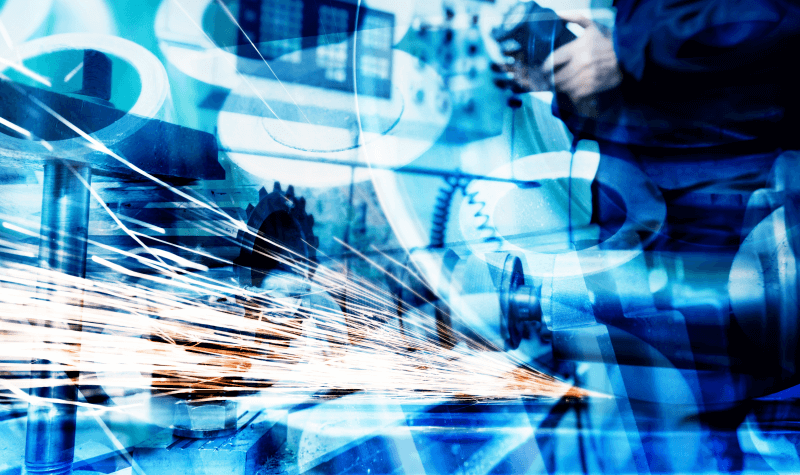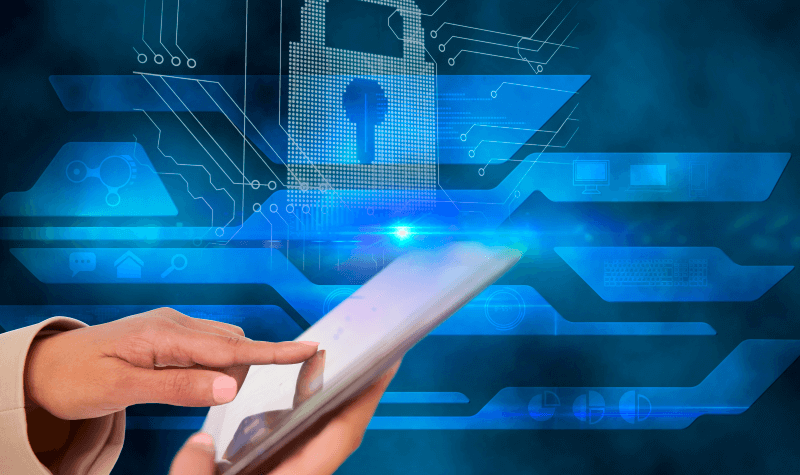
-
DURATION20 WEEKS
-
SUBJECT AREAProduction and Logistics
-
COURSE LEVELSecond Cycle
-
CREDITS2.5 HP
-
INSTITUTIONMälardalen University
-
STUDY TYPEDistance
-
START DATE2025-09-01
-
END DATE2026-01-18
COURSE DESCRIPTION
Learn how to improve industrial processes with modelling methods!
Modeling is used to create a virtual representation of a real product. With the help of the model, you can study how the product works, test different options and evaluate the product before it is produced in reality.
In this course, you gain knowledge on how to design and implement simulation models in the work of analyzing and improving production systems. You will learn how to plan and perform improvement studies, as well as apply the modeling process within the manufacturing industry.
This is a course with a flexible start: The course is given with flexible start and study pace, but we recommend a study pace of 20%, which means that the course takes about 8 calendar weeks.
courses you may also like

In this course, you will learn how data analysis in virtual production can improve your organization's results! Data analytics in virtual production uses advanced techniques to collect, analyze and present data to improve production. This system is designed to help companies optimize their production and increase efficiency. By learning how to model, do scenario analysis and evaluate using industrial software, identify bottlenecks, and use AI methods and applications, you will get all the tools necessary to succeed with a full production analysis. The course is given with flexible start and study pace, but we recommend a study pace of 20 %, which means that the course takes about 8 calendar weeks.

Learn about digital twins and how they can be used in smart production! A digital twin is used to create a virtual model of a real production system. Among other things, it can be used to simulate how the product will be manufactured, how materials flow and how machines move. The course gives you knowledge of industrial digital twins and their application within the framework of smart production. You will gain an insight into the possibilities digital twins offer for improving production systems and processes. You will gain an understanding of when the use of digital twins can be a beneficial solution in the development of production systems. This is a course with flexible start: The course is given with flexible start and study pace, but we recommend a study pace of 20%, which means that the course takes about 8 calendar weeks. You can join the course until the end of October.

Virtual commissioning (VC) is a technique used in the field of automation and control engineering to simulate and test a system's control software and hardware in a virtual environment before it is physically implemented. The aim is to identify and correct any issues or errors in the system before deployment, reducing the risk of downtime, safety hazards, and costly rework. The virtual commissioning process typically involves creating a digital twin of the system being developed, which is a virtual representation of the system that mirrors its physical behaviour. The digital twin includes all the necessary models of the system's components, such as sensors, actuators, controllers, and interfaces, as well as the control software that will be running on the real system. Once the digital twin is created, it can be tested and optimized in a virtual environment to ensure that it behaves correctly under various conditions. The benefits of using VC include reduced project costs, shortened development time, improved system quality and reliability, and increased safety for both operators and equipment. By detecting and resolving potential issues in the virtual environment, engineers can avoid costly and time-consuming physical testing and debugging, which can significantly reduce project costs and time to market. The course includes different modules, each with its own specific role in the process. Together, the modules create a comprehensive virtual commissioning process that makes it possible to test and validate control systems and production processes in a simulated environment before implementing them in the real world. Modeling and simulation: This module involves creating a virtual model of the system using simulation software. The model includes all the equipment, control systems, and processes involved in the production process. Control system integration: This module involves integrating the digital twin with the control system, allowing engineers to test and validate the system's performance. Virtual sensors and actuators: This module involves creating virtual sensors and actuators that mimic the behavior of the physical equipment. This allows engineers to test the control system's response to different scenarios and optimize its performance. Scenario testing: This module involves simulating different scenarios, such as equipment failures, power outages, or changes in production requirements, to test the system's response. Data analysis and optimization: This module involves analyzing data from the virtual commissioning process to identify any issues or inefficiencies in the system. Engineers can then optimize the system's performance and ensure that it is safe and reliable. Expected outcomes Describe the use of digital twins for virtual commissioning process. Develop a simulation model of a production system using a systems perspective and make a plan for data collection and analysis. Plan different scenarios for the improvement of a production process. Analyze data from the virtual commissioning process to identify any issues or inefficiencies in the system and then optimize the system's performance. Needs in the industry Example battery production: Battery behaviors are changing over time. To innovate at speed and scale, testing and improving real-world battery phenomena throughout its lifecycle is necessary. Virtual commissioning / modeling-based approaches like digital twin can provide us with accurate real-life battery behaviors and properties, improving energy density, charging speed, lifetime performance and battery safety. Faster innovation (NPI) Lower physical prototypes Shorter manufacturing cycle time Rapid testing of new battery chemistry and materials to reduce physical experiments Thermal performance and safety It’s not just about modelling and simulating the product, but also validating processes from start to finish in a single environment for digital continuity. Suggested target groups Industry personnel Early career engineers involved in commissioning and simulation projects Design engineers (to simulate their designs at an early stage in a virtual environment to reduce errors) New product introduction engineers Data engineers Production engineers Process engineers (mediators between design and commissioning) Simulation engineers Controls engineer System Integration

The main goal of the course is to look into Virtual and Augmented Reality and investigate how this technology, together with the recent developments in AI and Robotics, support sustainability and green transition. The course starts with a brief overview of the concept of reality and virtuality and looks into some fundamentals of human perception and action. It explores, for example, how we build mental representations and why we perceive some artificially created experiences as real even when we know that they are fictional. We will also apply the concept of artificial sensory stimulation to other living organisms and look into experiments on virtual reality for other animals and even ants. The course then proceeds to look into the fundamental research in reality-virtuality continuum and an overview of relevant technologies. We will see how modern graphics and rendering technology allows to “hijack” human sensory input and how tracking technologies allow to collect data from human actions. This vital concept and technology part will serve as a foundation to discuss further questions related to application of Virtual and Augmented Reality. Those include ethics of extended reality applications, for example related to neuroplasticity effects of virtual reality or user profiling, or cybersecurity aspect of possible user identification. However, the main focus of the course is on sustainability and green transition. The course looks beyond the potential ability of virtual and augmented reality technologies to reduce the need for physical travel (e.g. through telepresence), and discusses such topics related to Industry 5.0. For example, design and simulation, where modern technology allows to reduce the needs for physical prototyping and helps to optimize product development processes, or industrial process optimization through digital tweens, or immersive training and education, allowing adaptive learning pace for each student. The course includes an invited lecture with industry professionals. Recommended prerequisites: At least 180 credits including 15 credits programming as well as qualifications corresponding to the course "English 5"/"English A" from the Swedish Upper Secondary School. Online meetings (estimated dates): -January 15 -Februry 5 -March 19 Study hours: 80 This course is given by Örebro University.

Why markets for electricity? How do they function? This introductory course explains how incentives shape outcomes in the electricity market. It brings out the implications for businesses and society of electricity pricing in the shadow of the energy transition. The course aims to provide a comprehensive overview of the electricity market's role in ensuring an efficient electricity supply and addressing key public questions, such as What is the purpose of the electricity market? Why do electricity prices vary by location? How can electricity prices surge despite low production costs? Are there alternative ways to sell electricity? Why is international electricity trading important? The course emphasizes the role of economic incentives in shaping market behavior and addresses critical issues such as market power and its consequences. You will also explore the inefficiencies stemming from unpriced aspects of energy supply and the role of regulation in mitigating these inefficiencies. As the global push toward decarbonization accelerates, the course delves into the challenges posed by large-scale electrification, the implications of climate legislation for energy systems, and the impact of protectionist national policies. The course offers a comprehensive introduction to the electricity market, provides you with analytical tools for independent analysis and brings you to the forefront of current energy policy debate. The course will enable you to Describe the interaction between the electricity system and the electricity market. Explain how the electricity market can increase the efficiency of electricity supply, e.g. with respect to market integration. Show how market power reduces the efficiency of the electricity market. Categorize fundamental market imperfections and describe their solutions. Explain economic and political challenges associated with the green transition. Apply economic tools to analyze the electricity market and examine how changes to the electricity system and regulation affect market outcomes. Target group This course is designed for engineers and managers eager to enhance their understanding of electricity markets within the context of the industrial green energy transition. The purpose is to increase the understanding of the scope of the electricity market and its role in achieving efficient electricity supply. Digital seminars The course includes five scheduled digital seminars. The seminars will be recorded to provide flexibility in completing the course, although we highly recommend to participate in the seminars if possible. November 4, 9:15 - 12:00 November 11, 9:15 - 12:00 November 25, 9:15 - 12:00 December 2, 9:15 - 12:00 December 16, 9:15 - 12:00 Study effort: 80 hrs

Kursperiod 1/11 till 19/12 2025 Innehåll Batterivärdekedjan: från processer uppströms till nedströms Åldrande batterier: Hur batterier förändras över tiden och vilka risker det är med. Toxicitet: Fokus på material och deras påverkan på miljö och hälsa. Säkerhetsaspekter: Riskbedömning och hantering av batterier i olika skeden av deras livscykel. Livscykelanalys: Miljö- och hållbarhetsperspektiv. Kursens upplägg Kursen kommer att ske som en synkron onlinekurs (fjärrundervisning) för maximal flexibilitet för deltagarna. Kursen kommer att innehålla onlineföreläsningar, diskussionstillfällen, ett kort individuellt projekt, skriftliga reflektioner. För att slutföra kursen krävs en arbetsinsats på ca 40 h. Du kommer att få kunskap om Kursdeltagaren kommer att lära sig följande: Grunderna för batterisäkerhetsfrågor och toxicitet längs batterivärdekedjan En introduktion till livscykelanalys Kunskaper för hantering av åldrande batterier Vem vänder sig kursen till? Kursen vänder sig till personer inom logistik, automation, energiproduktion och byggsektorn. Främst de som hanterar batterier i fordonsflottor, arbetar med säkerhets- och hållbarhetsfrågor inom fordonsindustrin, arbetar med integration av batterier i lokala och nationella energisystem/infrastruktur. Helst har deltagarna en utbildning inom teknik eller naturvetenskap. Deltagare bör ha vissa förkunskaper om batterier, genom teknisk/naturvetenskaplig universitetsutbildning, eller genom en grundläggande öppen kurs.